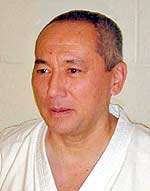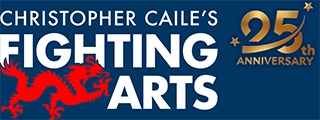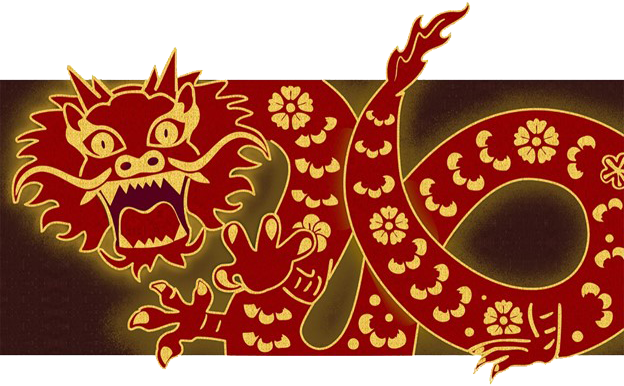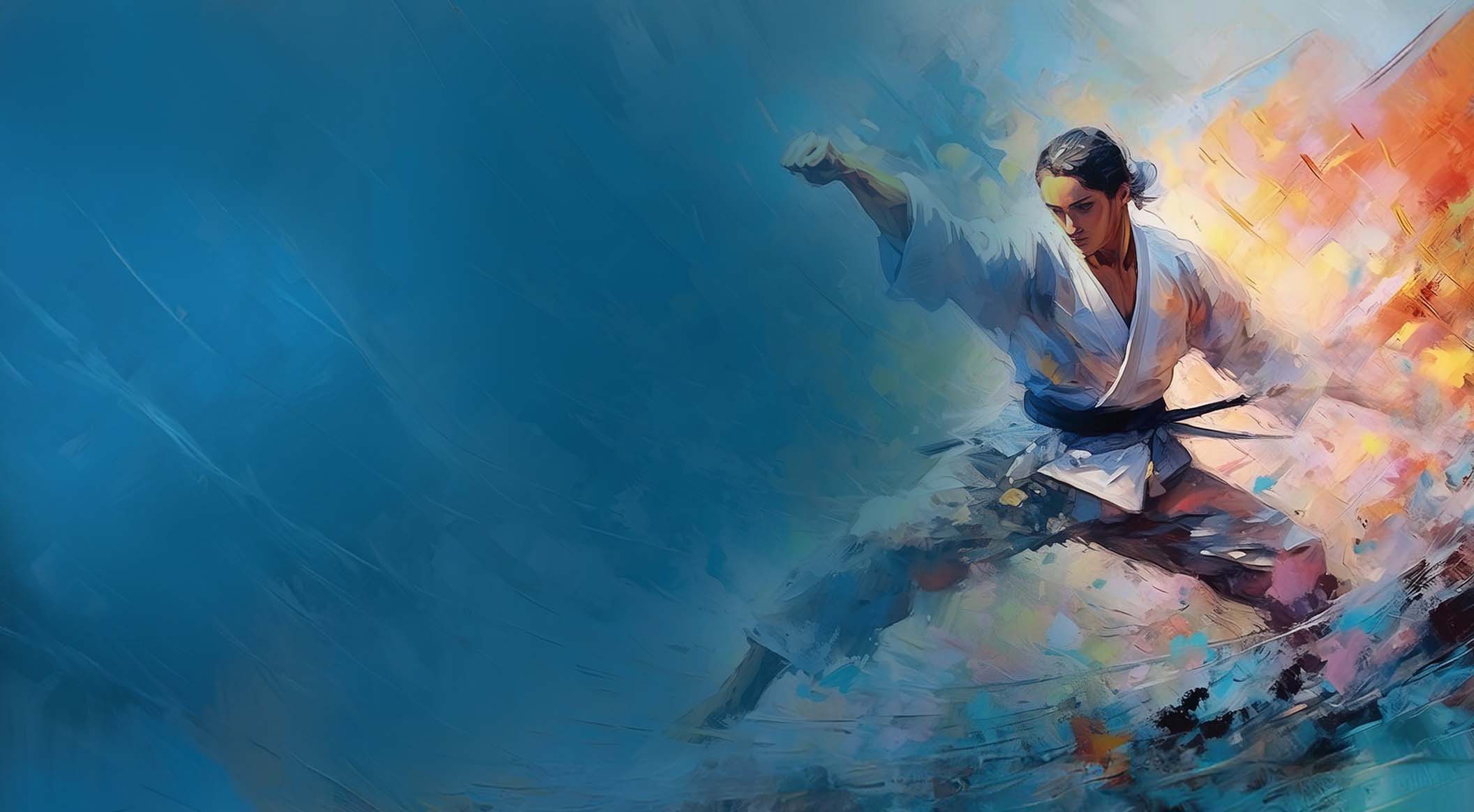Martial Mania
Reciprocity
By George Donahue

Over the many years of my obsession with martial ways, I've visited many schools of many types. Early on, my visits were just to humble schools, the sort that — because of the financial pressures — barely manage to stay open and run more on dedication of the students and teachers than on cash flow. I first visited a mega-school in the early 1980s. I was highly impressed by the facilities and the huge student population. I was also impressed by the undeniable athleticism and sparring skills of a couple of the students. But several things bothered me instantly and led me after some hard thinking to decide that this wasn't a very good school after all. All the flaws I perceived in this school sprang from a common root — there was no reciprocation of courtesy and respect.
By that point I had been training in various martial arts for about twenty-five years. I had even taught judo and jujutsu for a while before realizing that I wasn't skilled enough myself to be teaching anyone else and needed to concentrate on polishing my own technique and understanding. When I resumed teaching, my models for my own teaching style were the American, Chinese, Japanese, and Okinawan teachers who generously shared their knowledge with me, despite my shortcomings as a student. These teachers all had a notable trait that exemplified their attitude: When their students bowed to them, they bowed back. When their students bowed very deeply to them, they bowed very deeply in return, whether the students were highly experienced seniors or white belts at their first workout. It was genuine humility and consideration.
My first sensei, Ando Shunnosuke, taught his students, by example and by word, that a good teacher bows to his students in gratitude. Ando-sensei was a great master of judo, jujutsu, and bonsai, highly respected in each of these three parallel universes. His classes were strongly disciplined, very serious work. Yet he always had a smile and kind words of encouragement for each of his students, even if sometimes the smile and encouragement came just after he had slammed those students to the mat or made them rake garden gravel for hours in the rain or hot sun. At the beginning and end of each class, and at the beginning and end of each technique with a partner, Ando-sensei always bowed deeply. Often his bow was deeper than that of his students, especially those who were too proud. I was for a while one of those thoughtlessly proud ones — until my mother found out and straightened me out. (Those were still the spare-the-rod-and-spoil-the-child days.) I was just a small kid in Ando-sensei's dojo, but he always made me feel as though he had a special place in his heart for me — even as he did the same for all the other students, too.
Although there were exceptions among the students and some of the instructors in the mega-school I visited, it did not, as an institution, value kindness or courtesy. A big deal was made about respect and loyalty and unquestioning obedience, but only the obedience was real (and thus very strange to me). The show of respect and loyalty was not genuine, because it flowed only one way and was based on fear and anxiety. The school operated as a strict pyramid system, with the occupants of any particular level bowing and scraping when dealing with their seniors and lording it over their juniors. This is wrong, and not even very useful. There is no true respect, no true loyalty, unless it is mutual and freely given. If it's not reciprocal, it's a sham, an artificial construct likely derived from yakuza, kung fu, and samurai movies.
In the years since that visit I've been to many schools and clubs in many places. Each time I've been to a new dojo, the first thing I've noticed is whether or not there is true courtesy. Sometimes it's hard to tell right away, because the teacher and the students observe the outward form very well. Quite often, though, when the outward form is carried out with extreme rigidity, I soon find that the form is hollow. In that situation, the outward form is a camouflage for strife, excessive egotism, and, usually, a self-serving instructor. In some cases, extreme cultish or exaggerated adherence to the formal courtesies indicates a lack of real knowledge of the art. Sometimes it's a shell that covers a culture of cruelty and exploitation — institutionalized bullying or predation. Sometimes it's just a situation where no one knows any better.
In any case, it's never an optimal situation. If you are new to martial arts, or if you are experienced but looking for a new place to train, judge the book by its cover. If the cover smells fishy, there is something rotten inside. However, even if the cover is pristine, it just might be that the rot hasn't penetrated it yet. Caveat emptor: If there is no true reciprocal courtesy, too little kindness, too little consideration, you are better off going somewhere else to train. The good thing is that there are a lot of great schools and dedicated teachers out there. Unless you live way off the grid, you don't have to settle for anything less.
Copyright © 2008 by George Donahue & FightingArts.com
George Donahue
George has been on the board of FightingArts.com since its inception and is also a Contributing Editor.
George is a retired book editor, with a career spanning four decades, among his positions have been editorial stints at Random House; Tuttle Publishing, where he was the executive editor, martial arts editor, and Asian culture editor; and Lyons Press, where he was the senior acquisitions editor and where he established a martial arts publishing program. At Tuttle, he was the in-house editor for the Bruce Lee Library. Throughout his career he also edited, acquired, or reissued a wide array of military history, martial arts, and Asia-centric titles.
He was born in Japan in 1951 and originally named Fujita Tojo, with the Buddhist name KanZan. He was renamed George Donahue when he was several months old. After living part of his early childhood in the U.S. and France, he returned to Japan when he was seven years old and immediately was put (involuntarily) into intense training in traditional Japanese martial arts. His childhood training in Japan was focused on judo and jujutsu, primarily with Ando Shunnosuke, who blended keisatsujutsu (often referred to as police judo) and Olympic style judo in his teaching. He also studied kyujutsu (archery), sojutsu (spear), and kenjutsu (swordsmanship), with several teachers under the direction of his uncle, Tomita Yutaka. Following his return to the U.S. when he was twelve years old, he continued to practice judo and jujutsu, as well as marksmanship with Western style compound bow and firearms, and began the study of Matsubayashi Ryu karate in his late teens. Subsequently, he has studied aikido and cross trained in Ying Jow Pai kung fu. He began studying tai chi chuan in 1973 and now teaches qi gong and tai chi for health and fitness, as well as Okinawa Taijiken, which blends the principals of Okinawan karate with tai chi.
After studying Okinawa Karatedo Matsubayashi Ryu for ten years, he changed his focus to the teaching of Kishaba Chokei. He has been a student of Shinzato Katsuhiko, the director of Okinawa Karatedo Shorin Ryu Kishaba Juku, which comprises karate and kobujutsu (including Yamane Ryu Bojutsu) since 1983. He was also a student of Nagamine Shoshin, Nagamine Takayoshi, Kishaba Chokei, and Nakamura Seigi until their deaths. A key teacher in the U.S. was Arthur Ng, with whom he trained and taught for several years in New York City. He currently teaches Kishaba Juku privately, along with special training in karate, weapons, and self-defense. He has taught seminars throughout the U.S. and in Israel.
He has been teaching martial arts almost continually for sixty years. His first class, at twelve years old, was in judo for a group of military dependents and airmen at Sioux City Air Base, Iowa, at a time when the Air Force Strategic Air Command was beginning to stress training in martial arts, particularly jujutsu.
He was introduced to Kundalini Yoga practice in Japan but didn't begin serious practice of Kundalini and Hatha Yoga until he was in college. He practices yoga at least an hour a day and now teaches various approaches to yoga. He is also a cancer exercise specialist and a Livestrong at the YMCA instructor, helping cancer survivors regain and maintain their vitality.
Search for more articles by this author:






